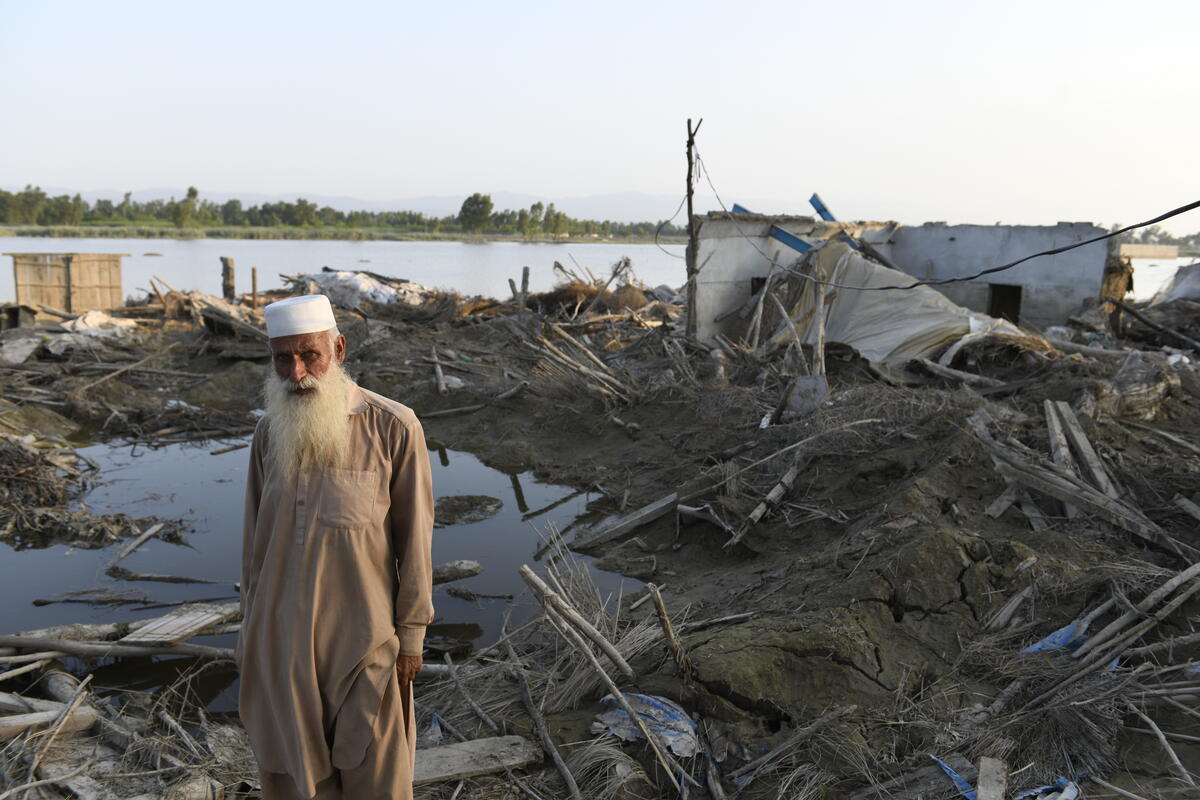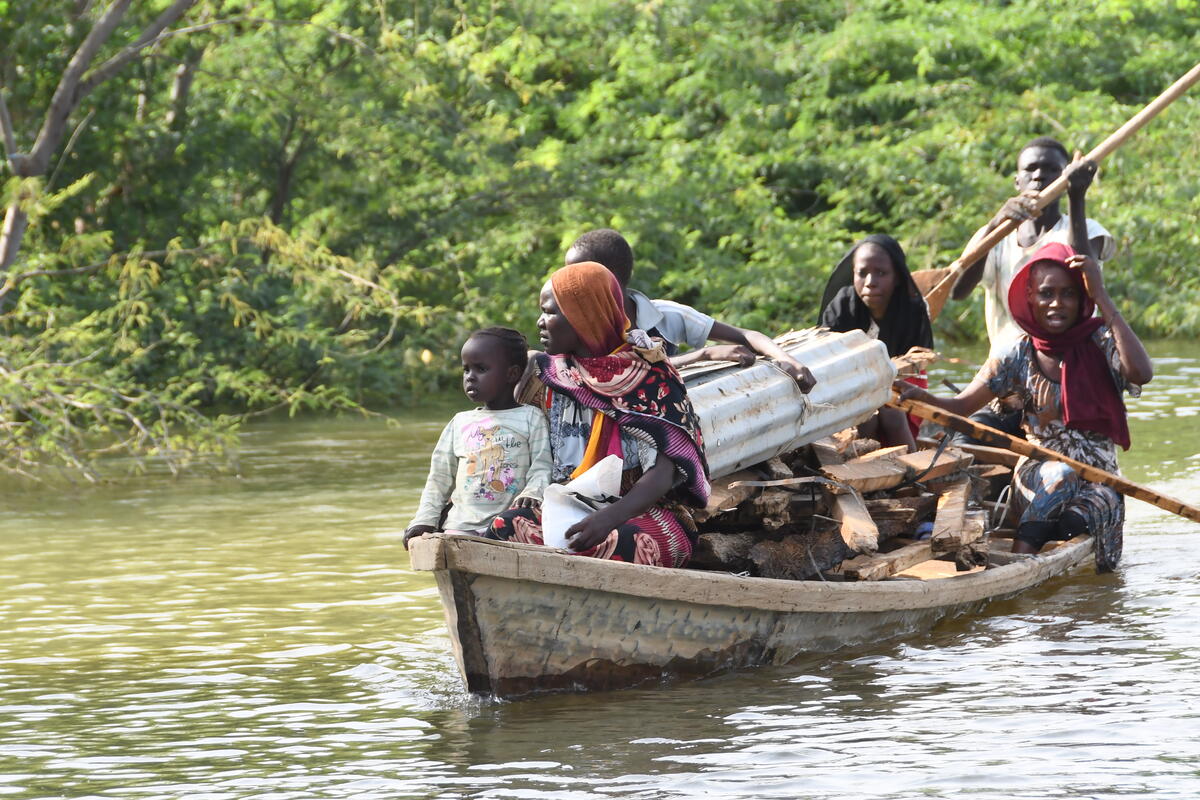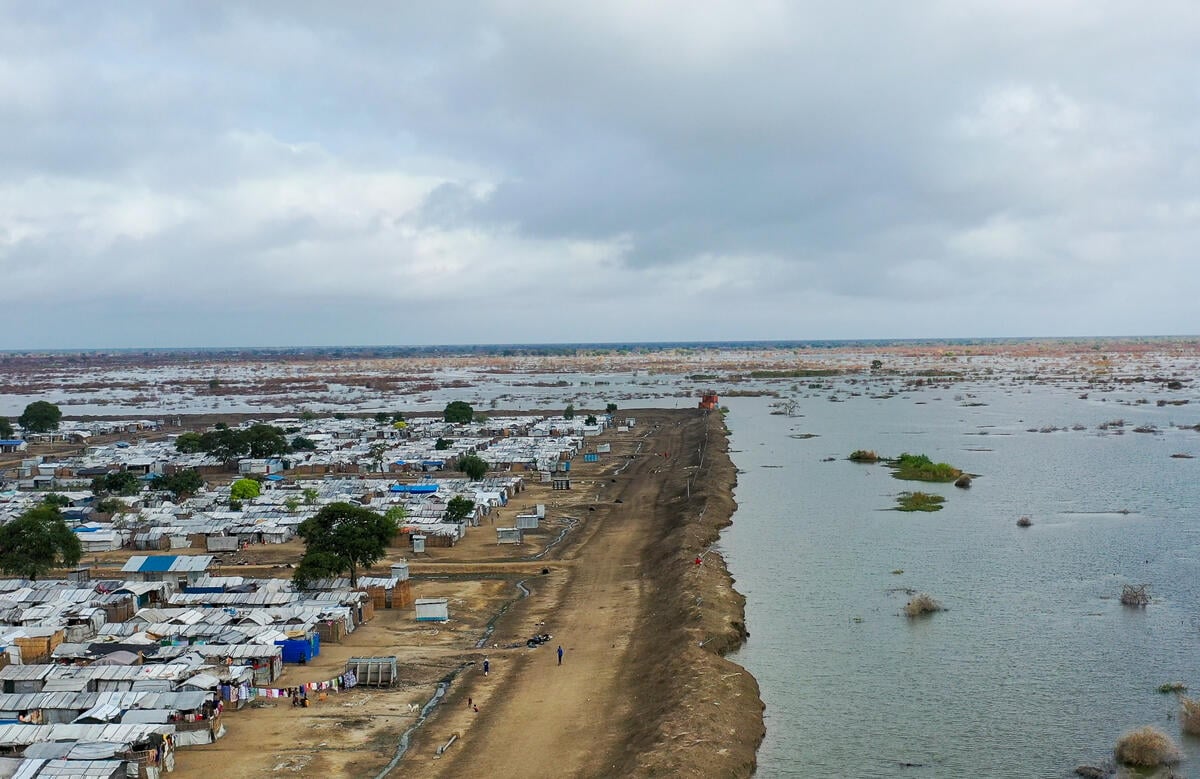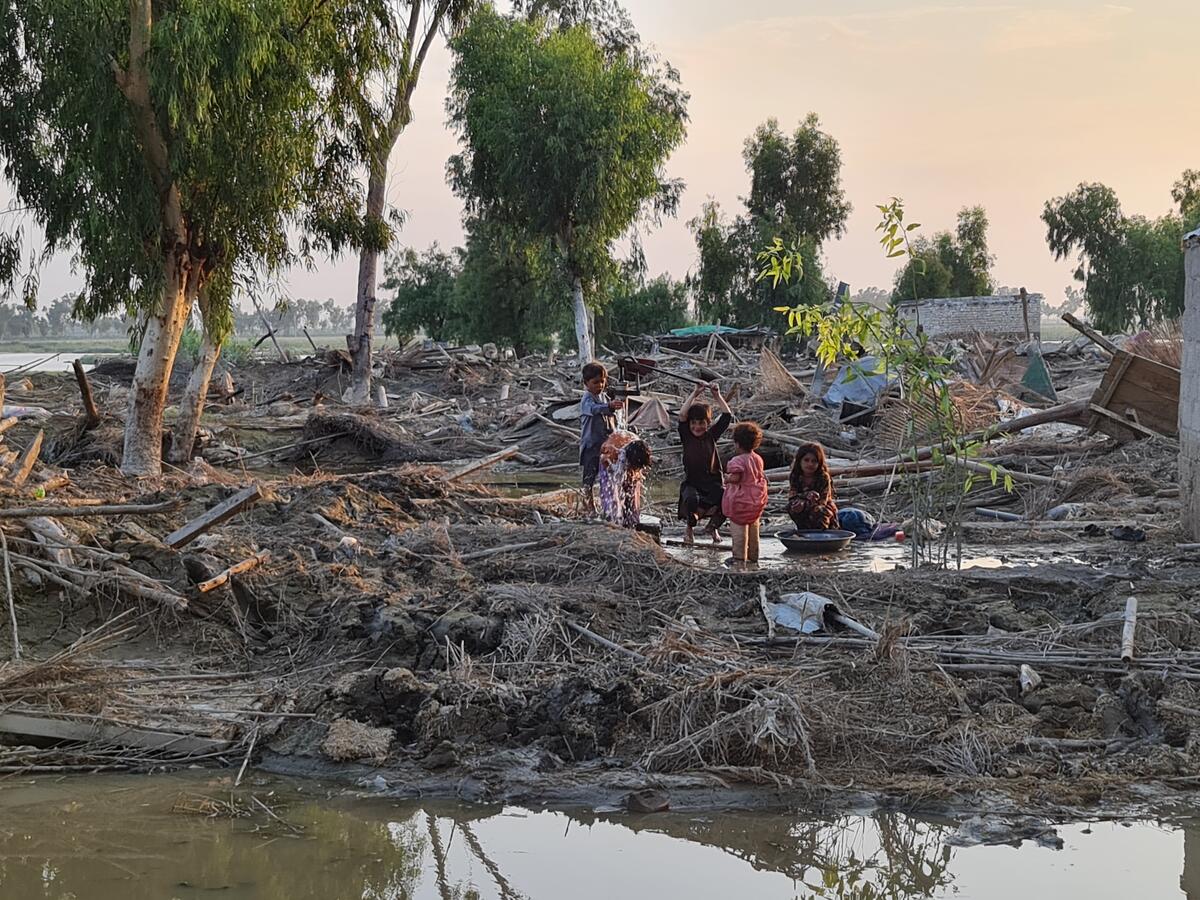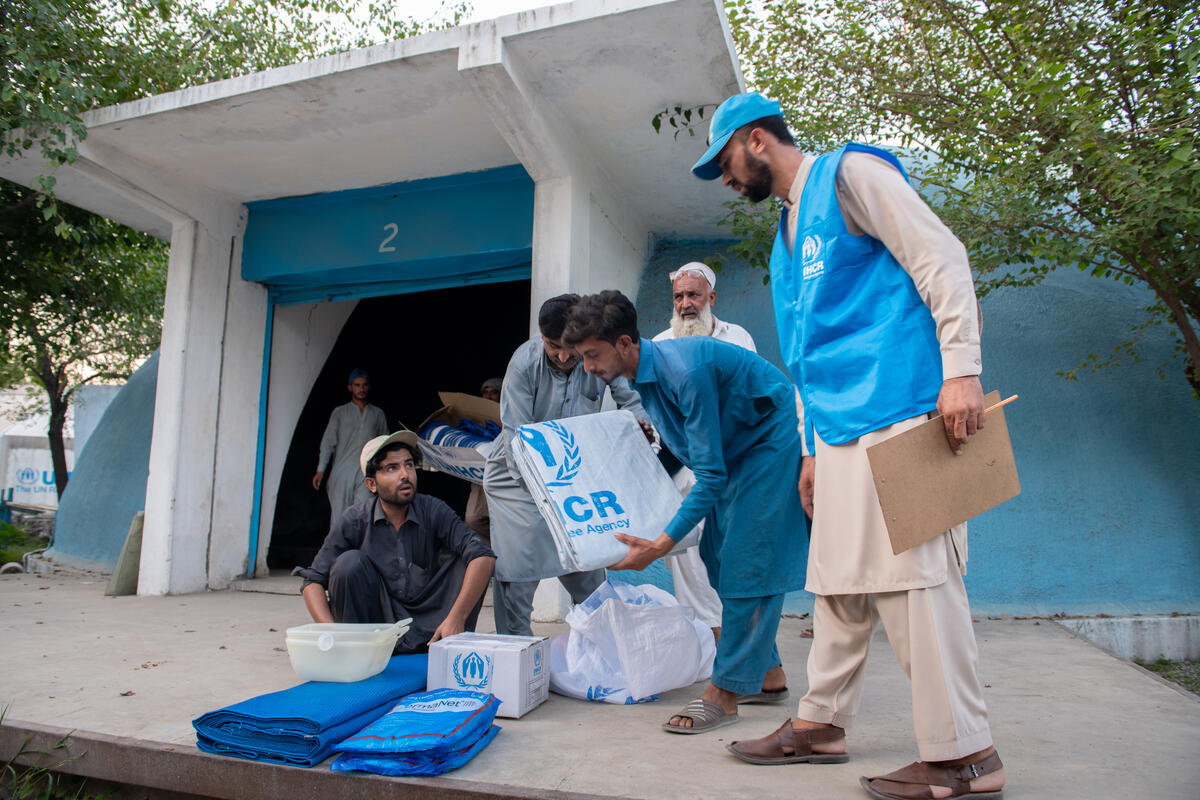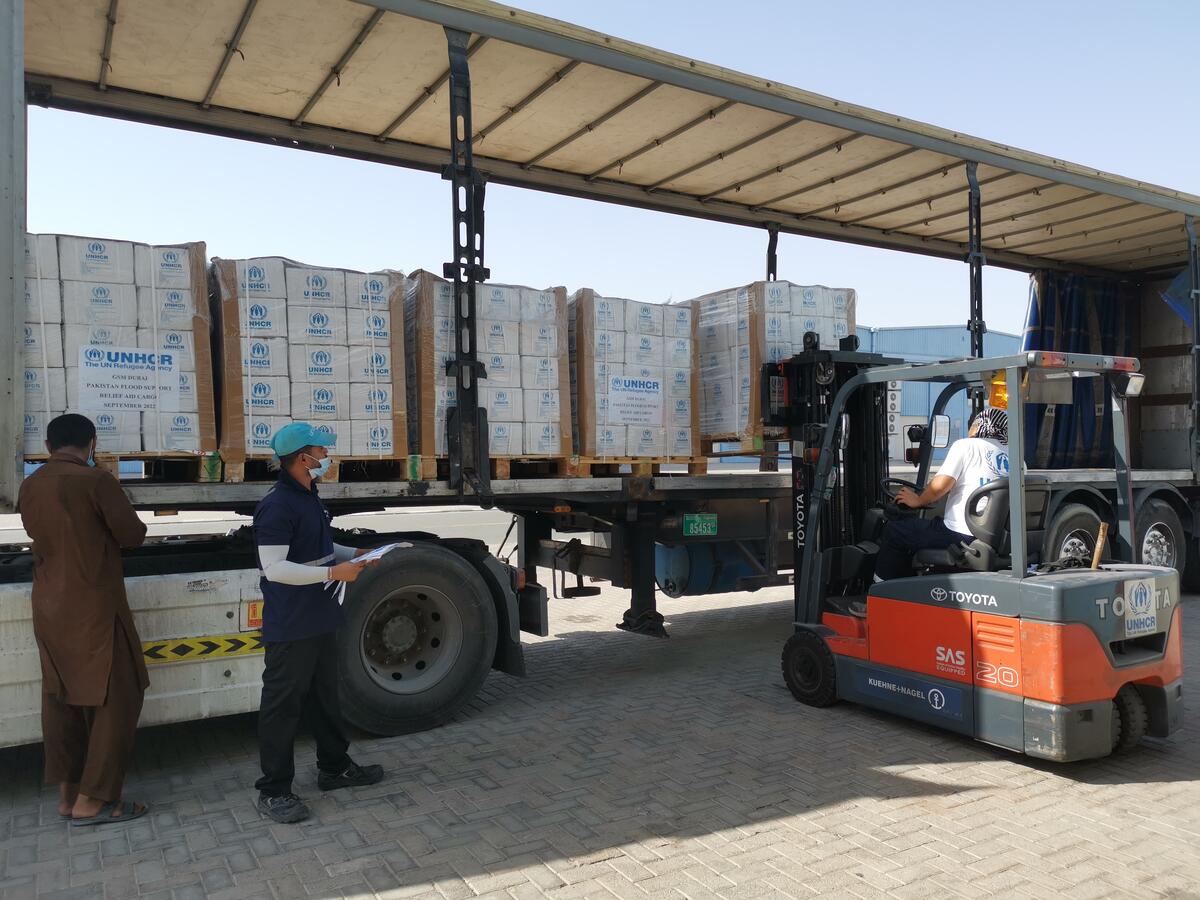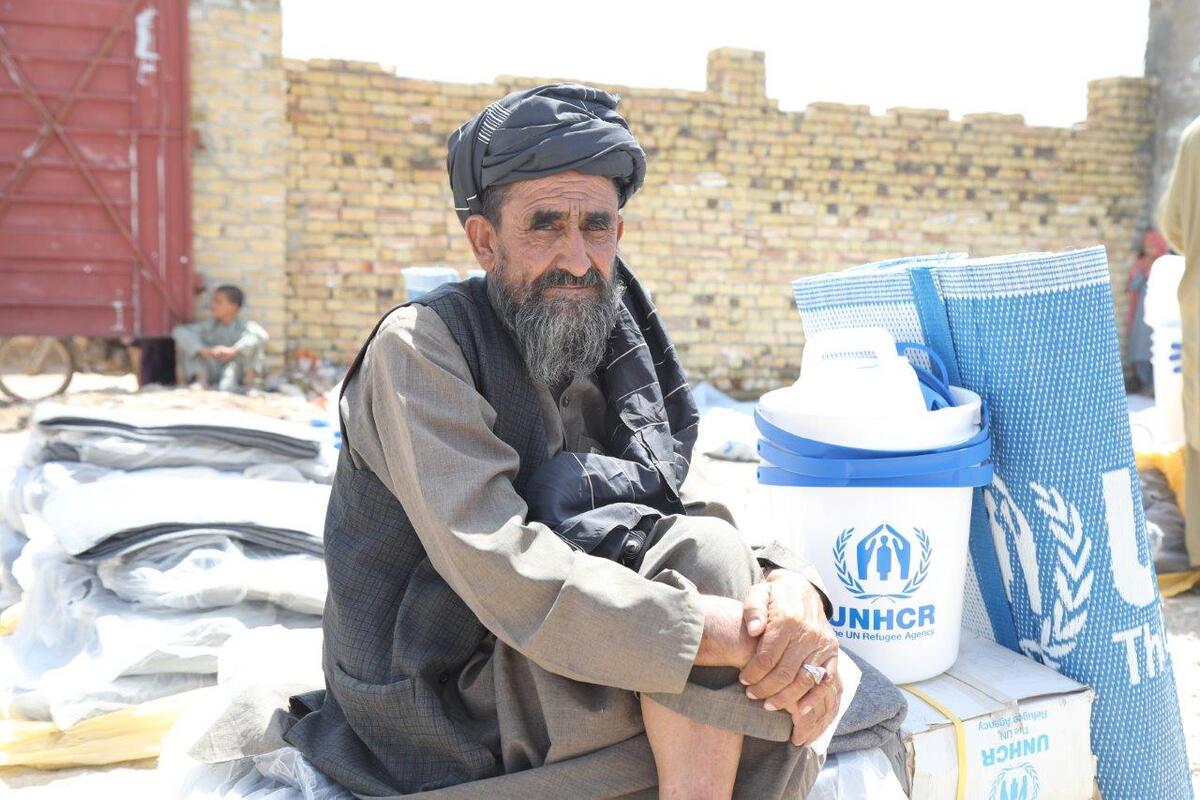Kenya floods: Refugees forced to relocate to higher ground
Kenya floods: Refugees forced to relocate to higher ground
Amidst slowly rising water levels and more rain, desperate refugees, forced to abandon their homes in Ifo camp in northern Kenya by flood waters, are being relocated to higher ground. More than 3,360 have now been transferred to Hagadera camp, one of the three camps in the Dadaab complex. Donkey carts were used to transfer many of the refugees, with more able-bodied refugees such as young men, walking the 10 km to Hagadera camp. Most of those moving to Hagadera are recently arrived refugees from Somalia who had just started to settle into a new site at Ifo.
By yesterday, UNHCR staff had met with refugee committees in Ifo - the worst-affected camp - to plan the redesign of Ifo camp on higher and drier ground. Already some 6,000 refugees from Ifo have settled, on their own, in the proposed new area. We are concerned that they are currently scattered across the dry area which has no water supply. We are now frantically working on a site plan for the new site which we are calling Ifo 2. We are also demarcating plots for the settlement of refugee families to be relocated from the flood-prone areas and arranging to extend water pipes to the site that is expected to take in some 20,000 people. Some 12 km of water pipes and accessories are scheduled to be airlifted from Nairobi on Monday, 27 November. The airlift is also expected to carry in more plastic sheeting for refugee shelters and basic medical supplies.
We are still very worried about the isolation of the Dadaab camps because of impassable roads. A private truck driver who travelled from Garissa to Dadaab was yesterday forced to abandon his journey and return to Garissa due to an impassable section of the road, some 30 km from Dadaab. It is becoming increasingly difficult to meet the urgent needs of the 160,000 refugees in the three camps which make up Dadaab without road links. While some supplies are being airlifted to the camp, the airstrip in Dadaab is small and cannot take large cargo planes. In the meantime, in the next two weeks, we are going to need up to 40,000 litres of diesel which we use to run the generators which power the pumps supplying water throughout the three camps. We also use generators for UNHCR and NGO offices and to provide communication throughout the camps.
We are also worried about the fate of some 400 asylum-seekers from Somalia who remain stranded at the reception centre in Liboi, some 98 km away. We are unable to reach them because of impassable roads between Dadaab and Liboi. We are concerned that they will soon run out of food and medical supplies.
Our partners in the camps have continued to sensitise the refugee population to the risks of drinking flood water. The hospital is treating the first case of Bilharzia and several cases of bloody diarrhoea. Tests confirm that these are not cases of cholera although our health partners have remained on high alert for possible cases.


